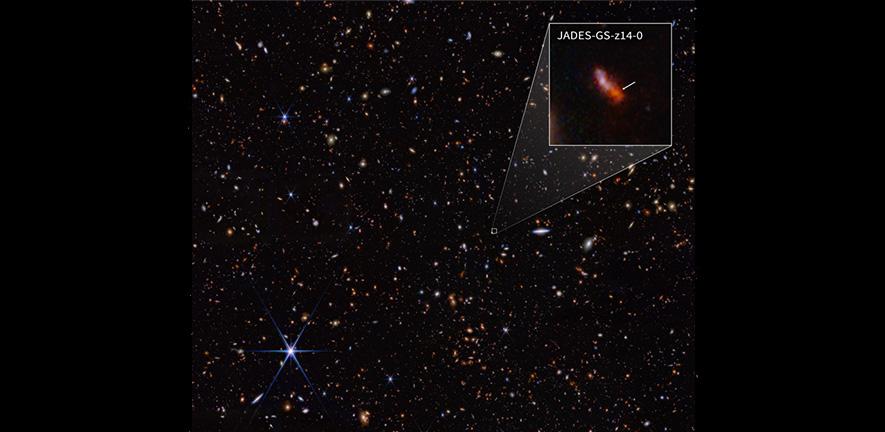

Peering back just 300 million years after the Big Bang, astronomers using the James Webb Space Telescope (JWST) have discovered the two most distant galaxies ever spotted. This groundbreaking discovery marks a major leap in our understanding of the early universe.
According to Cambridge University’s statement, the JWST Advanced Deep Extragalactic Survey (JADES) team found the galaxies in a region near the Hubble Ultra Deep Field. The extreme distance of these galaxies is evident in the stretching of their light caused by the universe’s expansion. This phenomenon, known as redshift, is so extreme for these galaxies that only JWST’s infrared capabilities could capture them.
Modern theories predict galaxies form in dense regions where gravity concentrates gas and dark matter. The rapid evolution of these halos in the early universe is why astronomers are eager to find even earlier galaxies. Each discovery pushes our view back to a less developed period.
image credits: NASA, ESA, CSA, STScI, Brant Robertson (UC Santa Cruz), Ben Johnson (CfA), Sandro Tacchella (Cambridge), Phill Cargile (CfA)
The newly discovered galaxies, named JADES-GS-z14-0 and JADES-GS-z14-1, were confirmed through spectroscopy, a technique revealing their exceptional distance. Interestingly, JADES-GS-z14-0, the record holder, is surprisingly large and bright for its age, exceeding expectations based on current theories.
“These galaxies join a small but growing population of galaxies from the first half billion years of cosmic history where we can really probe the stellar populations and the distinctive patterns of chemical elements within them,” said Dr Francesco D’Eugenio of the Kavli Institute for Cosmology at the University of Cambridge, one of the team members behind the discovery.
“JADES-GS-z14-0 now becomes the archetype of this phenomenon,” said Dr Stefano Carniani of the Scuola Normale Superiore in Pisa, lead author on the discovery paper. “It is stunning that the Universe can make such a galaxy in only 300 million years.”
The discovery wasn’t without its hurdles. Initially, JADES-GS-z14-0 appeared close to another galaxy, raising concerns about their true distance. However, deeper imaging with JWST confirmed its record-breaking status.
We just couldn’t see any plausible way to explain this galaxy as being merely a neighbour of the more nearby galaxy,” said Dr Kevin Hainline, a research professor at the University of Arizona.
Further observations with JWST’s Mid-Infrared Instrument revealed additional signatures consistent with a star-forming galaxy at an incredible distance.
“We could have detected this galaxy even if it were 10 times fainter, which means that we could see other examples yet earlier in the Universe—probably into the first 200 million years,” says Brant Robertson, professor of astronomy and astrophysics at the University of California-Santa Cruz, and lead author of a third paper on the team’s study of the evolution of this early population of galaxies. “The early Universe has so much more to offer.”
JWST has given us a sneak peek into the universe’s distant past before with an image of a 13.5 billion-year-old galaxy. In another of its images from last year, scientists discovered hundreds of ancient galaxies using the telescope. The telescope has broken its own record, and its latest photo is just a step towards a better understanding of the cosmos.
[via Space.com; image credits: NASA, ESA, CSA, STScI, Brant Robertson (UC Santa Cruz), Ben Johnson (CfA), Sandro Tacchella (Cambridge), Phill Cargile (CfA)]






